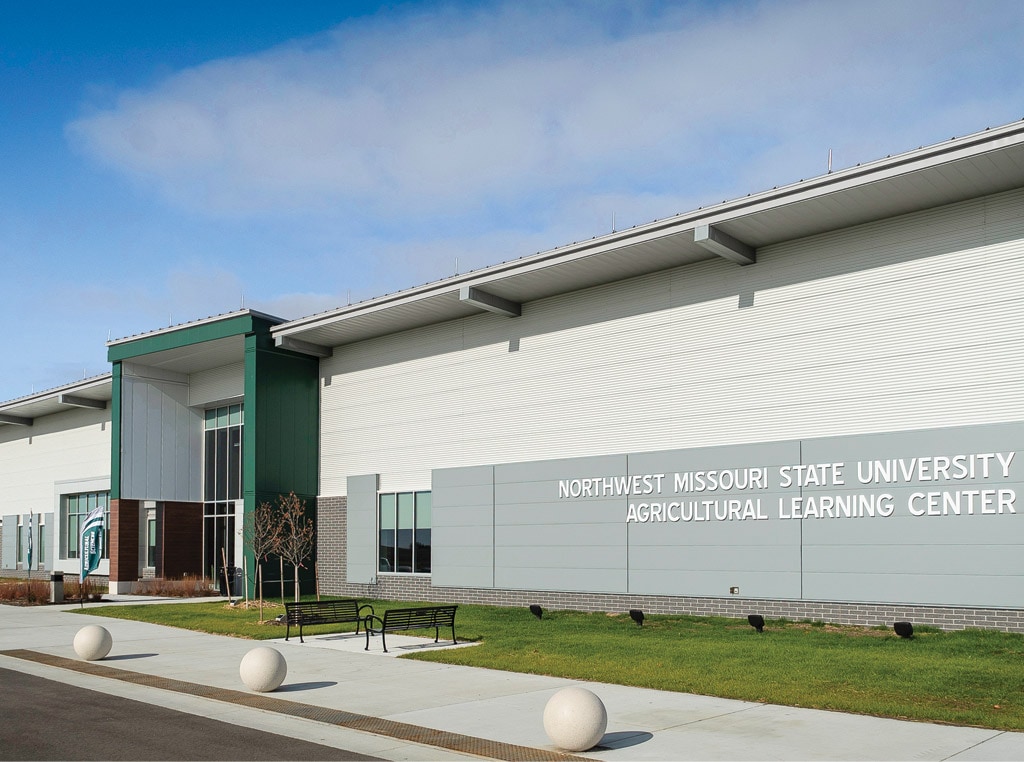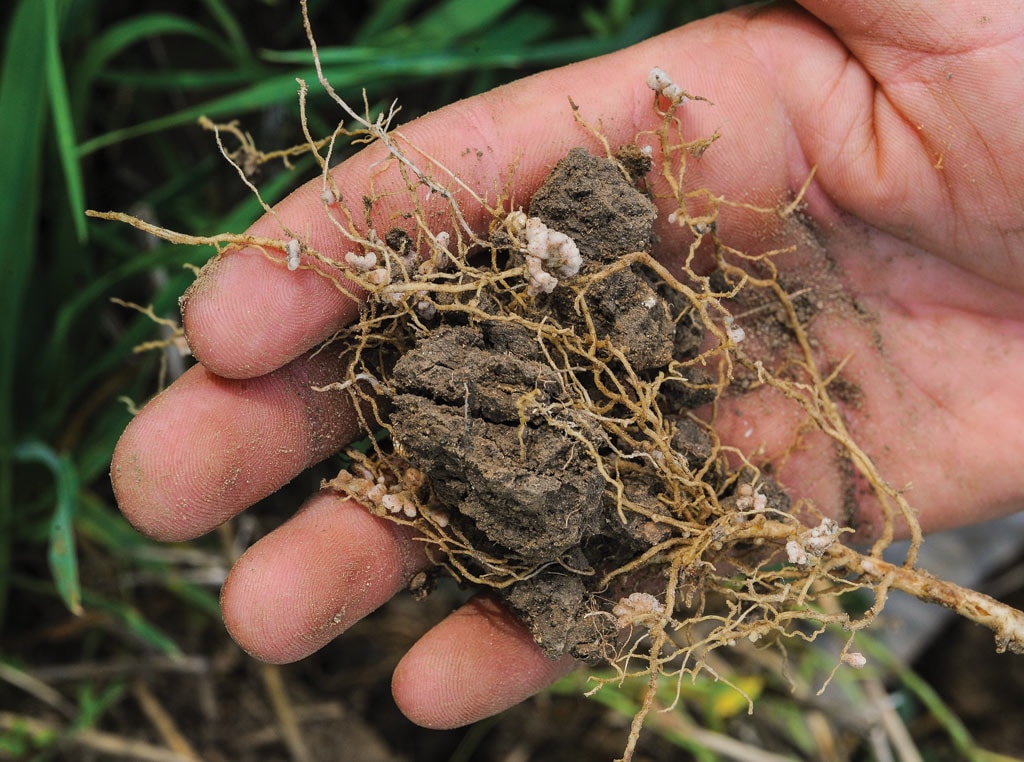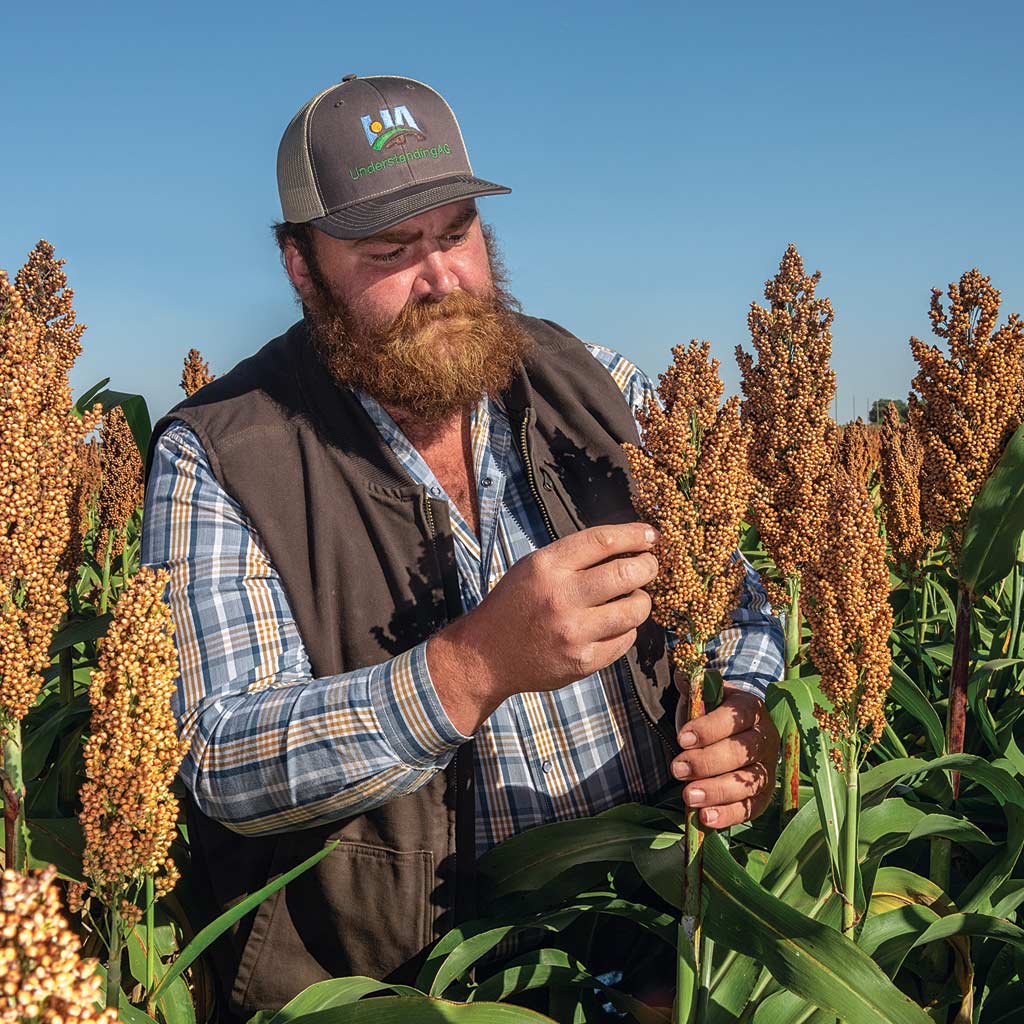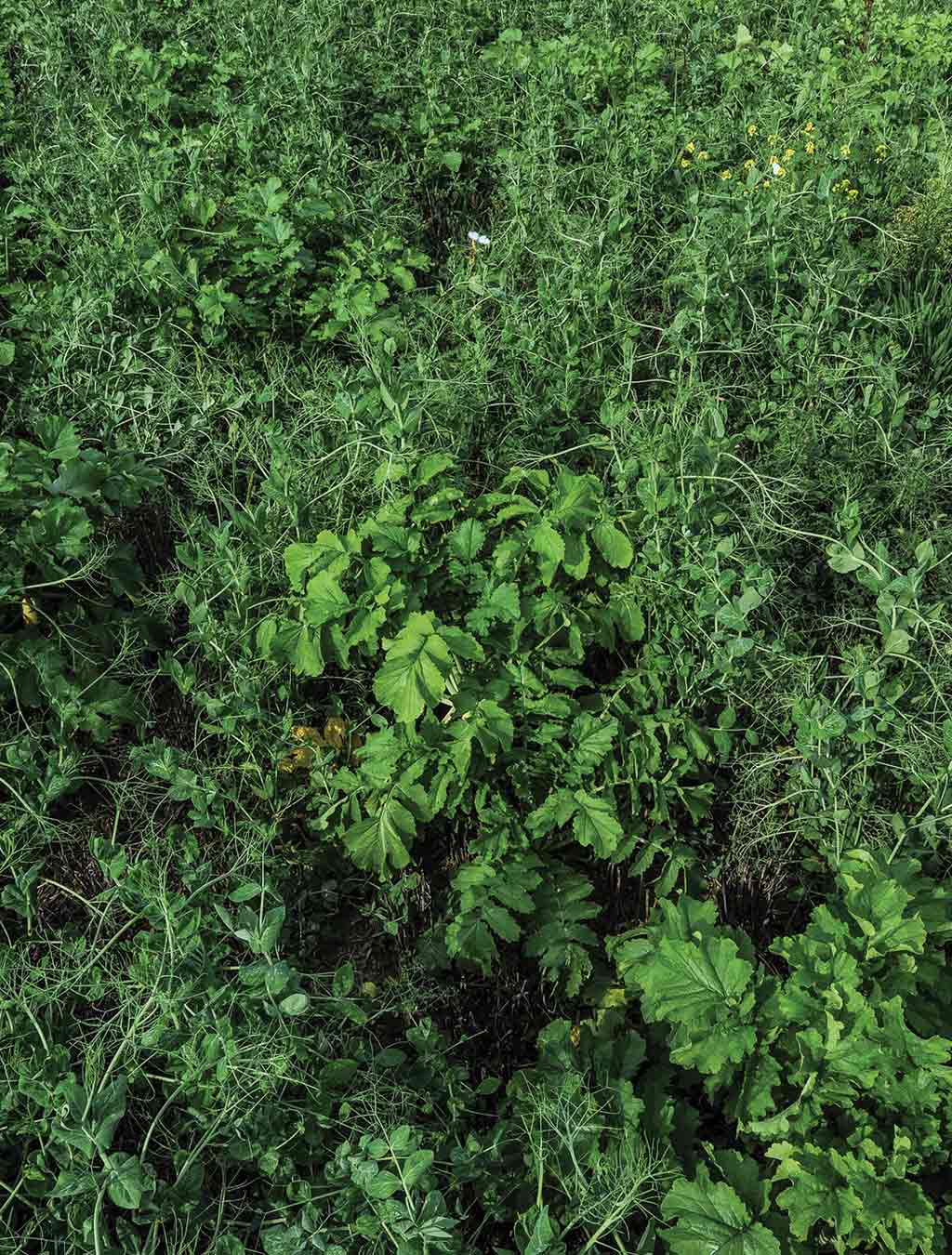Agriculture, Sustainability March 01, 2022
Nitrogen By Nature
Cover crops help cut fertilizer costs.
Record high prices for nitrogen fertilizer have farmers looking for alternative sources. Many are looking to cover crops—and the soil health they help to foster—as that economical source.
“We’re hoping to be able to produce half of our nitrogen by growing cover crops and building the soil microbes needed to release more of the nitrogen that’s unavailable in our soil,” says Sterling, Kansas, farmer Austin Schweizer. “That would have a huge impact on our profitability.”
Schweizer is working with consultants from Understand Ag in a Regenerative Ag project sponsored by General Mills to learn how to accomplish that goal. Last season he planted milo into a cover crop of cereal rye, Austrian winter peas, and hairy vetch and compared the final yield of strips receiving various nitrogen rates.
“Where 73 pounds of nitrogen was applied the crop made 81 bushels and with no applied nitrogen it made 60 bushels. We had hoped to stay within 10 bushels so were disappointed, but results were complicated by an extremely dry season,” says Schweizer.
A biomass analysis of the cover crop revealed dry matter of 2.97 tons per acre with a nitrogen content of 145 pounds. “We didn’t have enough rainfall to get that nitrogen into the ground where soil microbes could make it available, but we think with normal weather we can make it work, especially at today’s nitrogen prices.”
Schweizer is also eyeing the supply of nitrogen in his soil that a Haney Test revealed was currently largely unavailable to crops. The Haney Test goes beyond traditional soil testing to track the biological activity in the soil that’s needed to make nutrients more available. The test revealed a startling reservoir of 1,865 pounds of nitrogen per acre and that his soil is currently making roughly 20 pounds of that available annually.
Above. Kansas farmer Austin Schweizer hopes to get at least half the nitrogen needed for his milo crop by planting cover crop mixes that contain legumes to fix nitrogen and cereal crops that produce carbon to feed soil microbes.
Nitrogen’s challenge. Ryan Speer has the numbers on many of the benefits that 15 years of cover cropping have had on Jacob Farms, near Sedgwick, Kansas. “Our water infiltration rate has gone from one inch per hour to eight inches; soil organic matter levels have increased from .8% to around 3%; and higher soil test levels are allowing us to save from $15 to $50 per acre on phosphorus.”
Speer is also saving on nitrogen, but admits the decision to cut that input is one of the toughest he makes. “We’re using roughly 20% less nitrogen, but the potential year-to-year variability in nitrogen mineralization in the soil makes that a tough decision. However, we have decided we’re comfortable with a nitrogen rate of .7 pounds per bushel of corn which is significantly less than the traditional recommendation of 1.2 pounds per bushel,” he says.
Speer’s cover crop mix varies through the farm’s crop rotation, but typically includes cereal rye, oats, clover and hairy vetch. “We’ve cut input costs on our dryland acres sharply and reduced water use on our irrigated acres by 35% while yields have increased. We’re making $50 more per acre thanks to the cover crops,” he says.
Reinbeck, Iowa, farmer Jack Boyer is also trying to get a handle on the impact cover crops can have on the nitrogen needs of his corn. “We’re comparing various nitrogen rates where only a mix of cereal rye and rapeseed has been used as the cover crop, so there’s no nitrogen benefit from legumes,” says Boyer.
In the first year of his study, Boyer compared applying 180 pounds of nitrogen per acre to 110 pounds and found a 50 bushel yield loss that cost him $129 per acre. “Obviously we tried to go too far, so the next year we compared 180 pounds of nitrogen to 130 pounds and saw no impact on yield, so we saved $26 per acre,” he explains.
“Last year we compared five rates from 90 to 180 pounds and although the yield kept increasing with more nitrogen, it didn’t pay above 150 pounds. That’s dramatically less than the 200 pound rate we’ve typically used.” ‡
Read More

AGRICULTURE, SPECIALTY/NICHE
Biggest Fan
Deere aficionado shows his appreciation in ink.

AGRICULTURE, SUSTAINABILITY
Center for Opportunity
Northwest Missouri facility encourages agricultural literacy.



